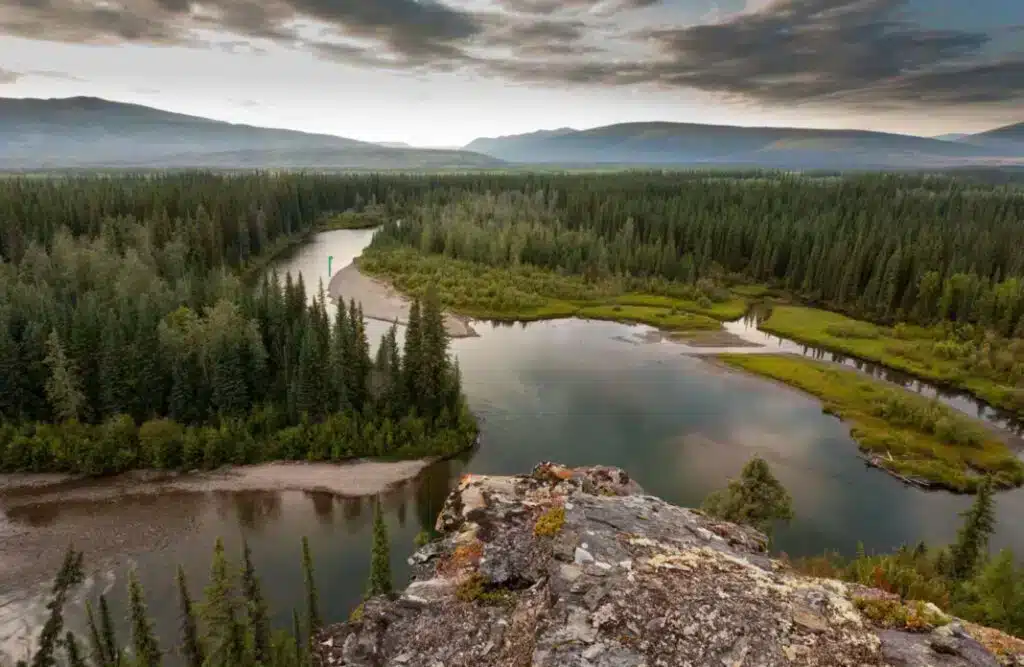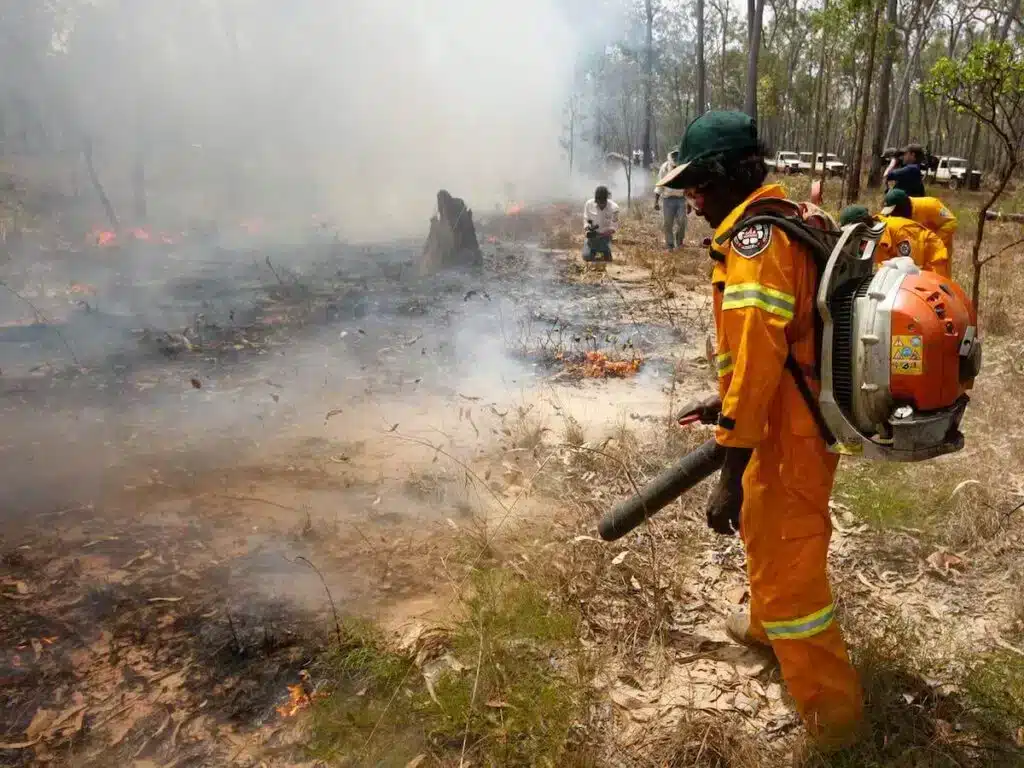As Australia prepares for a menacing bushfire season, experts in Canada are debating the drivers of increased forest fires.
The CBC News reports that British Columbia keeps breaking wildfire records – the four worst seasons have occurred since 2017.
And the consequences are crushing – firefighters killed, an entire village virtually destroyed, and oppressive smoke blanketing communities across the continent.
Last month, Wood Central reported on the tragic death of Canadian volunteer firefighter Devyn Gale, 19.

Hundreds of Australians have joined global forest crews in helping to fight wildfires and are hoping to bring lessons home ahead of the bushfire season.
In an article by Bethany Lindsay from CBC News, Ms Lindsay explores the root causes of the increased fire risks.
Is it decades of overzealous fire suppression? Poor forest management? The criminalisation of Canada’s traditional Indigenous burning practices? The systematic destruction of more fire-resistant boreal forest species?
Or is it climate change?
According to Jen Baron, the answer could be all of the above.
“It’s not one thing that’s causing these terrible fire seasons,” said Ms Baron, a PhD candidate from the Department of Forest and Conservation Sciences at the University of British Columbia.
“At a broad scale, the interaction between the climate and the fuels drives these changes. That also means that there are multiple strategies that we can take to try to address the problem.”
But even though all these elements play a part in our worsening wildfires, scientists say climate change has an outsized role.
In May, Wood Central reported on research linking 40% of wildfires on North America’s West Coast to elevated fire risk caused by climate change.

That imbalance is playing out in the boreal forests, damaged from this year’s disastrous and unprecedented fire season.
“They’re traditionally thought of as being more climate-limited systems in the sense that there’s always a lot of fuel to burn, but it was very rarely hot and dry enough for it to burn,” according to Ms Baron.
“The impacts of climate are felt in the sense that, before, it would have been very rare to have large fire seasons as severe as they are today.”
In June, Wood Central reported that climate change was driving a significant northward migration of boreal forests in Canada and Alaska.
The research alleges that as the climate warms, boreal forests migrate north, with trees thriving in previously too-cold areas.

However, the southern regions of boreal distribution may become too warm and dry for the forests, making them most vulnerable to wildfire.
On balance, British Columbia is seeing hotter, drier summers and fire seasons that start earlier and last longer, according to Dr Mike Flannigan, a professor of wildfire fire at Thompson Rivers University.
“It’s all about the weather. That’s why we’ve got this incredible fire season,” Dr Flannigan said.
Dr Flannigan said that forest management practices cannot be blamed entirely for the increased fire risk.
“Our forest management practices have been like this since about the ’80s. So why is it we’re seeing the bad fire seasons now? It’s because the weather has gotten more extreme.”
He points to this year’s above-average heat, the ongoing drought across the province and increased lightning as significant drivers of increased forest activity.
‘We can’t control the weather.’
Dr Flannigan likes to talk about wildfire as a recipe with three necessary ingredients:
- fuel,
- ignition and
- weather.
According to Dr Flannigan, not only does human-caused climate change feed into the weather, but it also affects ignition and fuel.
Often, increased vegetation can fuel fire, but extended periods of hot weather without precipitation can also make dried-out vegetation burst into flames.
Instability in the atmosphere also brings more lightning, with lightning strikes responsible for more than 70 per cent of this year’s fires.
That leaves Canada and the rest of the world with limited options for preventing or mitigating wildfires in the here and now.
Specialists who study fire say several measures can be taken to limit damage caused by fire.
These include more prescribed and cultural burning, drastic changes to the landscape and careful removal of potential fuels like woody debris and dead trees from the forests.
“We can’t control the weather,” wildland fire ecologist Robert Gray said.
“The only thing that we can control is the fuel. And that means that on a large scale — at the scale of the disturbances we’re seeing — we have to defuel the landscape.”
This viewpoint is supported by Australian forester Roger Underwood, who, reflecting on the lessons learnt from Canada’s fires, said Australia must invest in fuel reduction burning.
“The approach, promoted by bushfire practitioners and once known as ‘The Australian Approach’, accepts that an emergency response will always be needed since bushfires can never be prevented.”
“Still, if the fire grounds are properly prepared for a fire, then fires will be easier, cheaper and safer to control by emergency responders,” Mr Underwood said.
“The chief mitigation tool is fuel-reduction burning – deliberate, supervised burning under mild weather conditions.”
“The aim is not to ‘prevent’ bushfires, which is impossible, but to reduce the amount of flammable fuel in bushfire-prone bushland before a bushfire starts.”
To achieve this, Mr Gray acknowledges that the landscape change would be massive.
“Upwards of 40 per cent of the landscape needs to look different tomorrow than today.”

Mr Gray’s changes would bring the Canadian landscape closer to what it looked like before colonisation and the advent of the harvesting industry.
“We do have a limited window here where we can do things in a big way, and it will have a big impact,” Gray said.
This would also mean allowing some fires to burn freely, clearing out potential fuels, and learning to tolerate the smoke from more prescribed and cultural burning in the spring and fall.
Colonial policies that outlawed traditional burning practices have played a role in the current crisis, according to Amy Cardinal Christianson, an Indigenous fire specialist at Parks Canada.
“Indigenous people weren’t burning every inch of the North American continent; they were conducting specific burns in areas around their communities,” she said.
Like Australia, Canada is looking at ways to reconnect with indigenous and cultural burning of forests.
“While they were doing that mostly for cultural reasons like improving berries and making it easier to harvest near their communities and get the resources that they needed, they were also reducing the amount of fuels around their community in that landscape.”
Fire is ‘looking for stuff to burn.
As for Flannigan, he agrees that there are helpful measures that can be taken to reduce fire risks, including at the individual and community level through programs like the Canadian FireSmart program.
He said public information campaigns have also caused a steady decline in fires started by human activities.
But climate change is an unavoidable reality.
Flannigan referenced a study from scientists at the University of Victoria and Environment and Climate Change Canada that suggests human-caused climate change increased the area burned in 2017’s devastating British Columbia fire season by as much as a factor of 11.
A more recent study based on computer modelling of wildfires in California since the 1970s suggests that the warming climate was responsible for a 172-per-cent increase in area burned.
That’s because if it’s hot, dry and windy enough, almost anything will burn, Flannigan says.
Relatively fire-resistant aspen trees surrounded Fort McMurray, but they still rose in flames when a catastrophic wildfire swept the city in 2016.
Even wetlands, which generally act as obstacles for spreading fires, are of little help under severe drought conditions.
“Fire is probing, opportunistic — it’s looking for stuff to burn,” Flannigan said. “When things are extreme, vegetation is fuel. It burns.”






